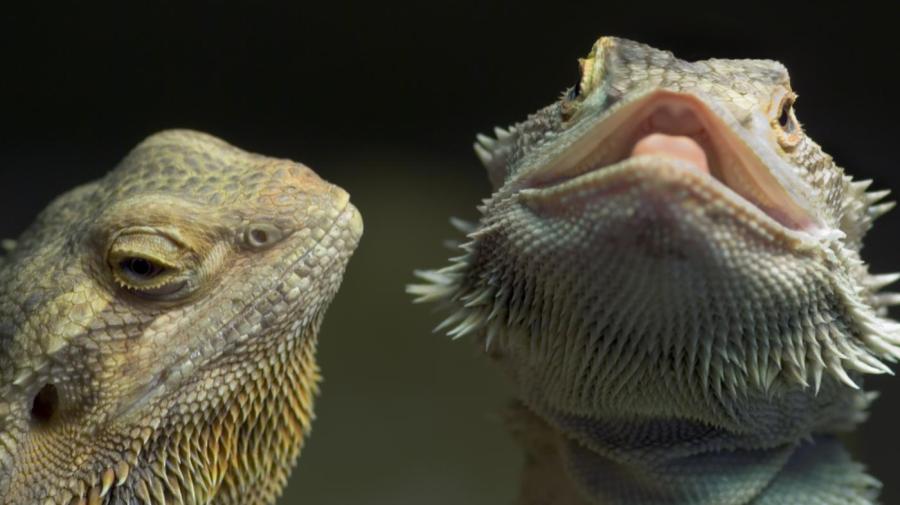How Do You Tell If a Bearded Dragon Is Sick?

Bearded dragons show sickness through deformities, stunted growth, seizures, loss of coloration, paralysis, labored breathing, mucus discharge, diarrhea, lack of appetite and weight loss. Some of these symptoms indicate genetic deficiencies that cannot be helped, but other conditions can be amended by making adjustments to the bearded dragon’s environment or diet.
Deficiencies in vitamin D3 and calcium bring on deformities, stunted growth and seizures. These can be solved by dusting insects with calcium and vitamin D supplement at each feeding and by ensuring proper lighting in the lizard’s tank. Bearded dragons should be housed in 40 to 55 gallon tanks with screen covers. Above the tank, fluorescent lights should be mounted to ensure the lizard gets sufficient UV radiation and heat in its basking area. The loss of color brought on by beta-carotene deficiency is alleviated by feeding the lizard fresh orange and yellow vegetables such as carrots. Hind quarter paralysis is brought on by overfeeding. Bearded dragons should be fed only small insects, and insects with hard exoskeletons such as mealworms should only be fed to bearded dragons when they are newly molted.
Although some illnesses can be cured at home by modifying diet or environmental conditions, others need professional help. If a bearded dragon manifests respiratory problems such as noisy breathing and mucus or gastrointestinal disorders such as loss of appetite and diarrhea, it is best to have a veterinarian treat it.





